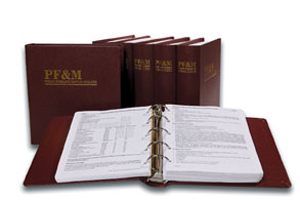
PF&M AT A GLANCE
MEDIA/COMMUNICATIONS LIABILITY
 |
Media liability (also often called communications liability) insurance originated in the United States in the 1930s. It developed out of a market need, particularly on the part of newspaper publishers, for protection against allegations of libel and slander. The need is demonstrated by reference to Coverage B, Personal and Advertising Injury Liability, in a standard CGL policy. One common form’s personal injury coverage excludes claims involving advertising, publishing, broadcasting or telecasting. The form also bars coverage for advertising injury when the insured company’s primary operation includes advertising, broadcasting, publishing or telecasting.
Today’s media liability policies, geared to the needs of growing numbers of firms with communication exposures, are carefully underwritten by a substantial group of insurers.
Courtrooms and insurer claims files have plenty of evidence to support the fact that companies in the broad fields of advertising, broadcasting and publishing need the protection of media liability insurance. Typically, the following risks may qualify for such coverage: advertising agencies, advertisers, authors, book publishers, cable television operators, magazine publishers, multimedia organizations, newspaper publishers, printers, radio stations, television stations, and miscellaneous communications-related firms.
The Internet continues to expand the market for media liability coverage due to the explosive growth of newsletters, periodicals and educational services, blogs, Web sites, chat rooms and e-mail forums. Individuals now face exposures similar to those of the largest publisher or media firm.
In any event, upon the submission of a completed application, the special needs of individual communicators are reviewed by underwriters. To contact insurers, program managers or MGAs specializing in advertising, broadcasting or publishing liability insurance, please refer to The Insurance Marketplace, published by The Rough Notes Company, Inc.
Although the coverage is not standardized, careful review of a typical form is likely to reveal coverage provided on a named perils basis. The protection is usually against allegations involving defamation; disparagement of an individual’s reputation; product disparagement; invasion or infringement of the right of privacy; infliction of emotional distress; plagiarism; piracy; copyright infringement; infringement of title, name or mark; and unfair competition with respect to other covered communication perils.
A proprietary form’s basic coverage may be modified for exposure factors associated with a given insured’s work, the selection of certain coverage options and underwriting requirements.
Example: Paul writes all the personal insurance (auto, home and personal umbrella) for Emma. Emma contacts Paul and says that she has been operating a Web site devoted to her passion for quilting. The Web site, which now has a huge membership, sponsors sections that allow trading of quilting patterns/ideas and a very active mail forum. Because of different arguments that have occurred via the site, Emma wants coverage against possible lawsuits. Paul agrees that coverage is a good idea. He tells her that one of his carriers offers a good program. He reviews its media liability form and calls an underwriter to discuss endorsements that would avoid using the sections (and premiums) of the carrier’s form that apply to large media operations.
When a policy is delivered to an insured, potential problems and disputes can be minimized by insisting that the insured carefully review and understand any applicable exclusions. They are not numerous because of the named perils nature of coverage. Generally applicable are exclusions for claims arising from exposures within the insured’s control (such as false advertising of the insured’s product) and claims for fines, penalties and criminal acts.
Generally, the following features are optional under a media liability policy:
• Defense costs provided in addition to policy limits
• Errors and omissions in the written or spoken word resulting in claims alleging financial loss as a consequence (Publishers and broadcasters of instructional material are vulnerable to this exposure.)
• Authors whose work is published under contract with the named insured
• Trademark infringement, personal injury liability or unfair competition claims (when the basic form bars this coverage from advertising agencies, advertisers and newspapers)
• Electronic transmission exposures (again, when this coverage is not offered under a basic form)
Limits of insurance and amount of retention (deductible) are major factors in rate determination. Rates are based in large part on hourly time charges for radio and television stations, number of subscribers for cable television operators, sales for book publishers, and circulation for newspapers and subscription publishers. Pertinent data revealed in the application and risk management procedures also have an important bearing on premiums. New or modified rate factors will likely be necessary as media liability forms are used to respond to Internet-related communications exposures.
An application for media liability insurance is the basis for coverage in the policy that is issued. Accordingly, it must be completed with great care and must be signed by an authorized person.
Please note that this is only an overview of this coverage. A thorough discussion of this coverage form may be found in the PF&M Analysis from The Rough Notes Company, Inc.
Agency OnLine subscribers, please refer to PF&M Section 360.4-2 Media/Communications Liability Coverage Analysis for a more in-depth discussion of this coverage part. *
CLARIFICATION In the “PF&M at a Glance” in the October Rough Notes, we incorrectly stated that the BOP is not subject to coinsurance provisions and provides replacement cost coverage. In fact, the current BOP (BP0003 07/02) is subject to coinsurance unless endorsed.